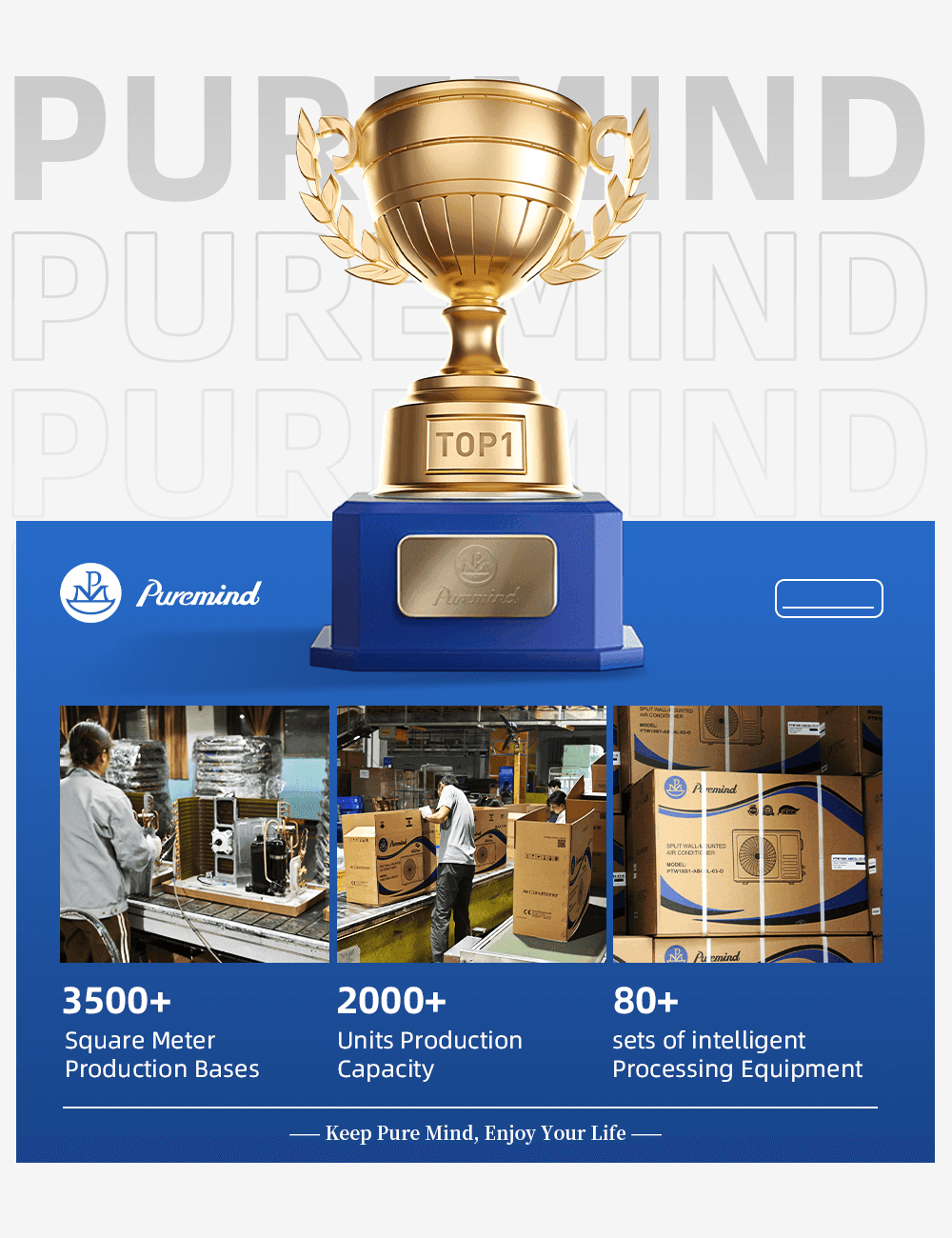Solar Powered Mini Split Air Conditioner: A Smart Move Toward Sustainable Cooling
As energy costs rise and environmental concerns grow, homeowners and businesses are increasingly turning to renewable energy solutions. One of the most innovative and efficient approaches to indoor climate control is the solar powered mini split air conditioner. Combining solar energy with inverter-driven ductless HVAC systems, this setup offers clean, quiet, and energy-efficient cooling and heating for homes, RVs, cabins, and off-grid structures.
In this guide, we’ll explore how solar mini split systems work, their advantages and challenges, installation requirements, costs, and how to decide if they’re right for you.
What Is a Solar Powered Mini Split Air Conditioner?
A solar powered mini split air conditioner is a ductless HVAC system that runs entirely or partially on electricity generated by solar panels. It typically consists of the following components:
- Indoor Unit: Mounted on a wall or ceiling, it circulates cooled or heated air into the living space.
- Outdoor Unit: Houses the inverter compressor and condenser, managing heat exchange.
- Solar Panels: Capture sunlight and convert it into DC power.
- Charge Controller & Inverter: Regulates voltage and converts solar DC into usable AC electricity for the mini split unit.
- Batteries (optional): Store excess energy for use when the sun isn’t shining.
These systems are ideal for homes looking to reduce grid dependency or go fully off-grid, especially in sunny regions with consistent daylight hours.
How Does a Solar Mini Split System Work?
The operation of a solar mini split AC system can be summarized in three steps:
- Solar panels generate direct current (DC) power from sunlight.
- A solar inverter (or built-in DC compressor for some models) converts the power into alternating current (AC) to run the mini split system.
- Any excess energy can be stored in batteries or fed into the grid (in grid-tied systems).
Some systems also feature hybrid operation, switching between solar and grid power as needed, ensuring continuous cooling even during cloudy periods.
Benefits of a Solar Powered Mini Split Air Conditioner
- Lower Energy Bills: Using solar energy can significantly reduce electricity consumption and utility costs.
- Eco-Friendly: Reduces your carbon footprint by avoiding fossil-fuel-generated electricity.
- High Efficiency: Inverter-driven compressors adjust speed to match demand, reducing waste.
- Quiet Operation: Ductless units operate at ultra-low noise levels, ideal for bedrooms or remote offices.
- Off-Grid Capability: Great for cabins, RVs, or locations with unreliable grid access.
- Tax Credits and Incentives: Eligible for solar investment tax credits (ITC) in many countries.
Types of Solar Mini Split Systems
1. DC-Only Systems
Designed to run directly from solar panels and batteries without converting power to AC. These are highly efficient but may lack flexibility.
2. AC-Powered with Inverter
Uses a solar inverter to convert DC to AC, powering conventional mini split systems. Compatible with both solar and grid power sources.
3. Hybrid Solar Mini Splits
Automatically switch between solar and utility grid power. Ideal for continuous cooling and heating even when sunlight is limited.
Is It Really Off-Grid?
That depends on your configuration:
- Off-Grid: Uses solar panels + battery storage to run 24/7 without grid connection.
- Grid-Tied: Uses solar when available, draws from the grid when needed (no batteries required).
- Hybrid: Uses solar, batteries, and grid power for maximum reliability and flexibility.
Installation Requirements
Installing a solar powered mini split air conditioner involves:
1. Sizing the System
- Match BTUs to room size (e.g., 9,000 BTU for 300–400 sq ft).
- Consider the number of solar panels needed based on power draw (typically 800–1,500 watts for a single-zone unit).
2. Mounting the Units
- Indoor unit is mounted high on a wall or ceiling
- Outdoor condenser is placed on a concrete pad or wall bracket
3. Setting Up Solar Panels
- Install panels on the roof or a solar array mount facing south (in the Northern Hemisphere).
- Use MPPT charge controllers and high-efficiency inverters for optimal performance.
4. Wiring and Configuration
- Connect panels to batteries (if used), inverter, and mini split units.
- Ensure all electrical work is done by a licensed technician for safety and compliance.
Power Consumption & Panel Requirements
| Mini Split Capacity | Power Draw (Watts) | Solar Panels Needed (Standard 300W) | |———————|——————–|————————————–| | 9,000 BTU | 500–700W | 3–4 panels | | 12,000 BTU | 700–1,000W | 4–6 panels | | 18,000 BTU | 1,000–1,500W | 6–8 panels |Note: Add 20–30% buffer for inefficiencies, inverter loss, and cloudy days.
Cost Breakdown
The total cost for a solar powered mini split system includes the AC unit, solar components, and labor:
| Component | Estimated Cost (USD) |
|---|---|
| Mini Split Unit (9,000–18,000 BTU) | $800 – $2,000 |
| Solar Panels (4–8 panels) | $1,000 – $2,500 |
| Inverter & Controller | $600 – $1,200 |
| Battery Storage (optional) | $1,000 – $4,000+ |
| Installation & Wiring | $1,000 – $2,500 |
| Total (Typical) | $3,500 – $8,000+ |
Top Brands for Solar-Compatible Mini Splits
- MRCOOL: Offers DIY-friendly models compatible with solar inverters
- Gree Solarix: Designed specifically for hybrid solar operation
- Pioneer: Efficient systems widely used in off-grid and RV applications
- HotSpot Energy: Offers 100% DC solar-powered air conditioners
- Daikin / LG: High-end brands compatible with external solar power systems
Maintenance Tips
- Clean air filters every 4–6 weeks
- Ensure solar panels are free of dust and snow
- Check battery health (if used) every 6–12 months
- Inspect wiring and connections annually
Is a Solar Powered Mini Split Worth It?
✅ Yes — if:
- You live in a sunny climate
- You want to reduce utility costs and reliance on the grid
- You own an off-grid cabin, RV, or eco-home
- You qualify for solar tax incentives
❌ Maybe not — if:
- You have limited roof space for panels
- Your area has low sunlight availability
- You’re not prepared for the upfront investment
Conclusion
The solar powered mini split air conditioner is a forward-thinking solution that combines energy efficiency, environmental responsibility, and modern comfort. By harnessing the sun’s power, you can enjoy cool summers and warm winters without worrying about electricity bills or grid dependency.
Whether you live off-grid, want to cut your carbon footprint, or simply prefer sustainable living, a solar mini split system is an excellent investment in the future of home comfort.



